Top 20 Most Ridiculous Lawsuits
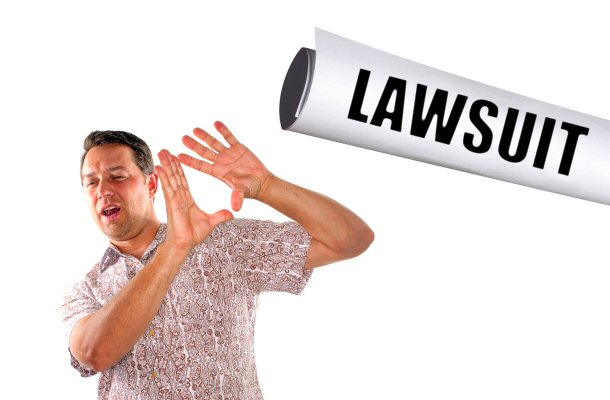
Ridiculous lawsuits are inevitable in a society that has various
types of citizens where each person has a unique sense of entitlement and/or a
series of complaints about the culture that they are a part of. There are plenty
of urban legends about absurd lawsuits where some are real but many are false.
The reality is that there’s no need for anyone to make up such elaborate
acts of litigious idiocy when there are already plenty of crazy lawsuits making
their way into court. In some cases, they end with an equally ridiculous ruling
in favor of the often questionable plaintiffs.
20) LimeWire Sued
for $75 trillion (2011)
LimeWire used to be one of the most common applications that people
used to illegally download mp3s and at the height of its popularity, LimeWire would
have around 4 million users a day. The application would use peer-to-peer
file sharing technology, which most people would use for music swapping.
LimeWire was sued by thirteen major record labels for copyright infringement and
the record companies felt that LimeWire was responsible for every single illegal
download that occurred through the application. The companies reached the figure
of $75 trillion in regards to the damages that they were seeking because LimeWire
had had over 500 million downloads. In the end, a court found that the figure
was ludicrous and ruled that LimeWire was liable but
only per song that was available (not every time a song was actually
downloaded). Ultimately, the damages were calculated to be no more than $1.5
billion. With an out of court settlement, the case came to a close with a $105
million agreement between the parties involved.

By Alle-Kalle Projects, via
Wikimedia Commons
19) Batman’s Mayor
vs. Batman’s Director (2008)
The mayor of the Turkish hamlet of Batman apparently considered launching legal
action against film maker, Christopher Nolan and the film studio, Warner
Brothers. This was in relation to the royalties that the two parties had
received from their widely successful film “The Dark Knight”. Although the
town’s officials never brought civil action against the film and its makers,
they still maintained that the hamlet’s name pre-dated the very first Batman
comic book, which was produced in 1939, and that the area was entitled to
compensation.
Batman, Turkey

By The Emirr, via
Wikimedia Commons
Christopher Nolan

By Richard Goldschmidt, via
Wikimedia Commons
18) Lauren Rosenberg
vs. Google’s Directions (2010)
Lauren Rosenberg tried to sue Google after she got bad directions from Google
Maps and ended up getting hit by a car; she had been walking down a busy highway
in Utah. After the accident, Rosenberg took civil action against both the driver
of the vehicle that struck her and Google. She claimed that the Google Maps
directions had led her into oncoming traffic. Given that the fallibility of
Google Maps is common knowledge and that the company had a disclaimer stating
that their directions aren’t always reliable, a judge dismissed the case.

17) Fausat Ogunbayo
Sues New York City for $900 Trillion
(2012)
Fausat Ogunbayo took civil action against the city of New York after her
children were put under state foster care. Ogunbayo claimed that her kids were
wrongfully taken away from her because the authorities found that she was
“mentally ill”. This type of case wasn’t unusual but the amount that the mother
was suing for certainly was different, she was suing for $900
trillion. Despite her history of mental illness and a number of instances where Ogunbayo had demonstrated extreme paranoia, legal experts praised her lawsuit as
it was seen not as an illustration of her questionable judgment but a clever
ploy to generate media’s attention to her situation. Ogunbayo wished to use the
subsequent attention from her lawsuit to emphasize the fact that just because
someone suffers from mental illness it doesn’t necessarily make them a bad
parent.
New York City Family Court building

16) Mary Bach vs.
Walmart Over .2 Cents (2011)
Mary Bach successfully sued Walmart for $100 over a 2 cent discrepancy and it
wasn’t the first time Bach had taken on the department store then won; it was the fifth. In this instance, Bach had bought a product that was priced
at 98 cents that scanned for $1.00. Even though the problem was addressed by a
cashier, Bach took legal action. Her motive was to highlight the failings of the
company to address the issue, after she encountered the very same problem six
days later. Walmart had nothing to say about the incident other than they have
over 50,000 products and that they do approximately 6,000 price adjustments a
week, so things could inevitably get missed.

15) Uri Geller vs.
Nintendo (2000)
Celebrity psychic, Uri Geller, who is best known for his spoon bending routine,
brought civil action against video game manufacturer Nintendo. He was seeking
$100,000 after he claimed that Nintendo’s Pokemon character Kadabra had
plagiarized his appearance. Geller argued that not only did the Kadabra
character look strikingly similar to himself but that the Japanese version of
the character had a remarkably similar name when translated to Japanese.
“Yungerer” is the Japanese name for Kadabra, which means “Un-Geller”. Geller
also claimed that he was insulted by the character because it had Nazi symbols
on his chest. Geller saw this as defamation of his own self character because it suggested that he
was a Nazi sympathizer. While the case amounted to nothing, Nintendo stopped
producing Kadabra on any Pokemon cards in 2003. Furthermore, the character
hasn’t appeared in the Pokemon television series since 2005.
Uri Geller

By Dmitry Rozhkov, via
Wikimedia Commons
Kadabra

Courtesy of ign.com
14) Cheryl Gray vs.
“Mafia Wars” Relationship Fling (2011)
Michigan woman, Cheryl Gray, began a relationship online with Wylie Iwan, who
lived in Washington and they met while playing the game “Mafia Wars” on Facebook.
It wasn’t long into the relationship before Gray began sending Iwan various
gifts and he accepted them. Gray eventually arranged a flight for Iwan to come
visit her in person then Iwan abruptly ended the relationship, explaining that
he met someone else. In response, Gray took legal action against Iwan and sued
him for damages totaling $8,368.88; that was the exact amount Gray had
spent on the relationship.

13) Defamation by
Google Suggest (2010)
The search engine Google was successfully sued in two separate civil suits
from France overseen in international courts and the cases were related to Google’s
auto-complete application, which suggests things that people might be looking for
as they type in their search queries. While Google insisted that their
auto-complete is harmless and operates with complex algorithms that are based on
actual searches people make, the plaintiffs argued otherwise. In one case, the French word for scam was added by auto-complete to
the end of a business’ name. In the other, an individual discovered that when
their name was entered into the search bar the auto-complete associated the words
“Satanist” and “rapist” with their name.
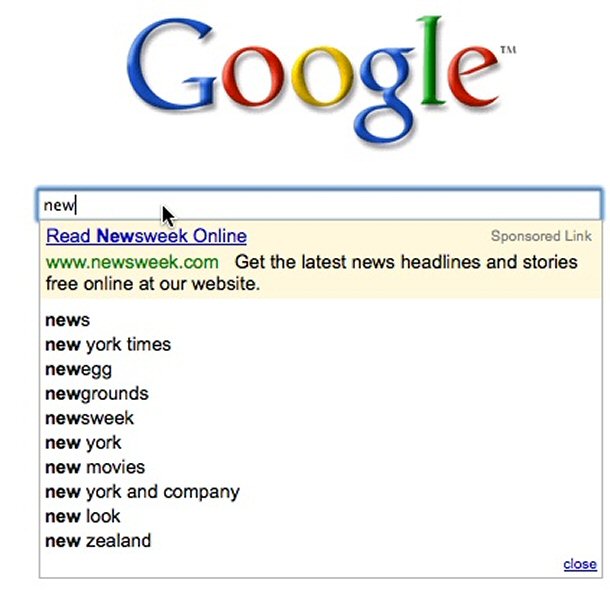
12) Pentium Allergy
(2002)
A Dutch woman took out legal action against Intel and the Dutch government due
to concerns for her health. She claimed that she ended up with hives as a result
of exposure to the high frequency radiation of a Pentium processor. Ultimately,
the case amounted to nothing.

By Krzysztof Burghardt, via
Wikimedia Commons
11) Home Depot’s
Toilet Seat (2005)
Bob Dougherty took on The Home Depot after he got stuck to one of their display
toilet seats. Shortly before Dougherty sat down on the seat to test it,
jokesters had covered the surface with glue. Dougherty was stuck to the seat,
pleading for help to get free. While The Home Depot had nothing to do with the
prank, Dougherty blamed the company for the situation. According to Dougherty,
it was fifteen minutes before anyone from the store came to help him. He claimed
that the stress of the situation wrecked havoc on the 57 year old and his
pre-existing heart condition. His physical and mental health was further
compromised by the stress as well as humiliation he suffered. It was reported that
paramedics had to wheel him away in front of customers and employees while he
was still attached to the seat. Despite the fact that the company was not at all
obligated, The Home Depot offered Dougherty $2,000 in compensation over the
situation. However, Dougherty was outraged at the suggested figure and he
launched civil action to obtain damages of $3,000.

10) Man Sues the
Homeless for $1 Million (2007)
Karl Kemp, who owned an upscale antiques store in Manhattan, tried to sue four
homeless individuals because they frequently gathered near the front of his
store. Kemp felt that the men were detrimental to his business because they
supposedly scared potential customers. As ridiculous as the case was, Kemp’s
demands were even more absurd. He was seeking damages of $1 million from the
homeless, who are usually penniless.

By Ed Yourdon, via
Wikimedia Commons
9) Insurance Company
vs. Icy Driveway (2007)
The usually altruistic organization of Meals on Wheels became litigious and
sued one of its own clients. Delivery woman, Delores Tanel, slipped on some ice in 81 year old,
Anne Keipper’s driveway when delivering food to her. Tanel landed hard, injuring herself badly. Despite the
fact that Tanel hadn’t been wearing boots as the weather conditions called for,
Kiepper was sued by the Meals on Wheels insurer, Sentry Insurance, for
payment of medical expenses.

By Dwight Burdette, via
Wikimedia Commons
8) Lindsay Lohan vs.
ETrade (2010)
Online brokerage company, ETrade, made an advertisement that played during the
Super Bowl that featured a variety of babies selling the services of ETrade.
One particular baby was characterized as “that milk-a-holic, Lindsay,” which
former child actress, Lindsay Lohan, took as a blatant attack on her character.
In response, Lohan launched civil action against ETrade and sought damages of
$100,000. As absurd as the case was, the lawsuit resulted in an unofficial,
out of court settlement for an undisclosed sum in Lohan’s favor.
Lindsay Lohan

By Rafael Amado Deras, via
Wikimedia Commons

7) The $54 Million
Pair of Pants (2007)
Former Judge, Roy Pearson, proved that even when someone is involved with the
legal system, they’re still not beyond taking out ridiculous lawsuits. Pearson
sued his dry cleaner, claiming that the cleaning had ruined one of his pairs of
pants. Not just any pair of pants, a pair that he had planned to wear on his
first day serving as an administrative judge. It wasn’t the first time Pearson
had issues with the store; in 2002, the dry cleaners had lost a pair of his
pants. While Pearson had let that instance go, he felt obligated to do something
about the latest pair. He tried suing Custom Cleaners, Jin and Soo Chung as well and
their son, seeking $67 million in damages but later reduced the claim to $54 million.
6) Trump vs.
Millionaire Claims (2011)
Donald Trump tried to sue author Timothy O’Brien when O’Brien suggested that
Trump might only be a millionaire, not a billionaire. Trump was outraged even
though
O’Brien had legitimate sources, who had estimated Trump’s fortune to be around
$250 million at most. He abruptly launched legal action on
the grounds that O’Brien’s claims amounted to defamation and Trump attempted to
force O’Brien to pay him $5 billion in civil court. Ultimately, Trump lost the
case because he was unable to demonstrate that O’Brien had made his claims with
malicious intent. Interestingly enough, while Trump’s lawyers insisted that his
fortune was around $7 billion, they failed to provide sufficient evidence to
back their claims.
Donald Trump

By Gage Skidmore, via
Wikimedia Commons
Timothy O'Brian

By Larry D. Moore, via
Wikimedia Commons
5) Pain and
Suffering Over Cookies (2005)
17-year-old Taylor Ostergaard and 18-year-old Lindsey Jo Zellitti decided one
night to make some cookies with the best of intentions, to give to their rural neighbors. After baking and packing the treats, the
girls attached a message for each neighbor wishing them all a good night. Then they
delivered cookies to a number of their neighbor’s properties and most of their
neighbors appreciated the gesture, despite the fact that it was around 10:30 at
night and completely unexpected. One neighbor, Wanita Renea-Young, really didn’t
like the gesture and she found it so distasteful that she
sued the teenagers. The 49 year old woman claimed she was terrified by Ostergaard and Zellitti being outside her home that late at night
to the point that she had an anxiety attack, which required a trip to the
emergency room. Young took
the teenagers to civil court, suing them both for pain, suffering and the
medical bill incurred from the incident. While Young won her case, she only received the money to cover her medical
expenses of $930. The notion that the teenagers should have to pay for Young’s
pain and suffering was dismissed by the court outright.

4) Robert Lee Brock
vs. Himself (1995)
Inmate Robert Lee Brock lodged a $5 million civil lawsuit against himself
because two
years earlier he drank some alcohol then ended up committing breaking and entering, along with grand larceny. He claimed that
he was so devastated with his own actions, at the violation of his own civil
rights by getting caught and incarcerated, that he deserved to be punished.
Given that he was serving 23 years for his crime and could not work, Brock felt
that the state owed him the money. His case was immediately thrown out of court
when the judge dismissed it as frivolous.
Robert Lee Brock

Courtesy of
www.trutv.com
3) Allen Heckard vs.
Michael Jordan (2006)
|
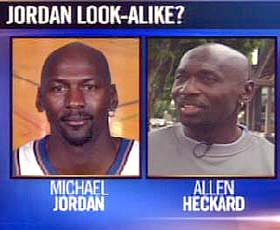
|
Allen Heckard took on the greatest basketball player of all time, Michael
Jordan, in civil court. Heckard’s complaint was that he resembled basketball superstar and had found the
similarities distressing. Heckard was seeking $862 million from both Jordan and
Nike’s co-founder, Phil Knight. He claimed that being mistaken for Jordan over
the years often made him uncomfortable when out in public, particularly whenever
he was near a basketball court. He stated that people requested him to perform
like Jordan but Heckard was 6 inches shorter and 8 years older than Jordan. He
couldn’t explain exactly how the distress he’d experienced was worth $862 but he
just figured that’s what he was entitled to. Ultimately, Heckard dropped his
case when the media got hold of the story and the subsequent coverage ensured
that he’d no longer be mistaken for Jordan. He is now remembered as the guy who
looks somewhat like Jordan and inexplicably tried to sue the superstar for no
reason.
2) Jian Feng vs.
Ugly Baby’s Mother (2012)
Chinese man, Jian Feng, sued his ex-wife on the grounds that she was ugly. While
his ex-wife had been attractive when he met her, Feng claimed that he later
found that she had originally been ugly. Feng made the discovery after his
ex-wife gave birth to their child, which Feng found to be extremely ugly. Initially, Feng
assumed that his ex-wife had cheated on him but a paternity
test showed that he was the father. His ex-wife finally admitted that before the
pair met, she had had $100,000 worth of plastic surgery. Horrified, Feng
divorced and sued her for deceiving him. Not only did Feng win the case, but his
ex-wife was also ordered to pay $120,000 in damages. The ruling against her had
a lot to do with the fact that China has a one child policy, as the court felt Feng’s one chance for the perfect child had been ruined.
Supposed picture of the "ugly" baby
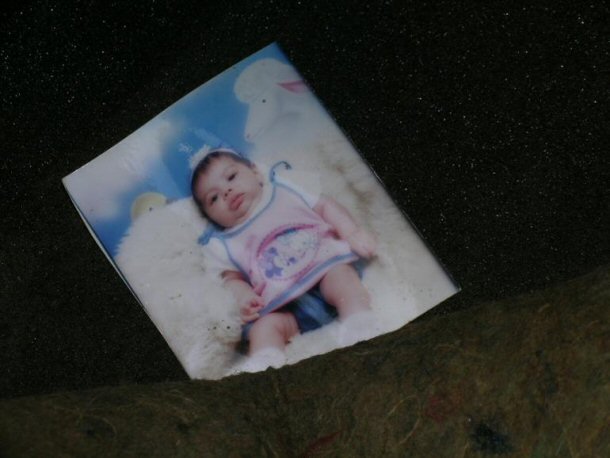
Former "ugly" wife

1) Gerald Mayo vs.
Lucifer (1971)
Gerald Mayo tried to take civil action against Lucifer, the Devil, and his various minions
more than 40 years ago because Mayo believed they had placed numerous
obstacles in his way throughout his life. He believed that the demonic obstacles
led to his personal failings in life. Despite following all the appropriate
legal avenues to have the case heard in court, Mayo’s case never went ahead
because the U.S. legal system had no jurisdiction when it came to Hell.
Statue of Lucifer
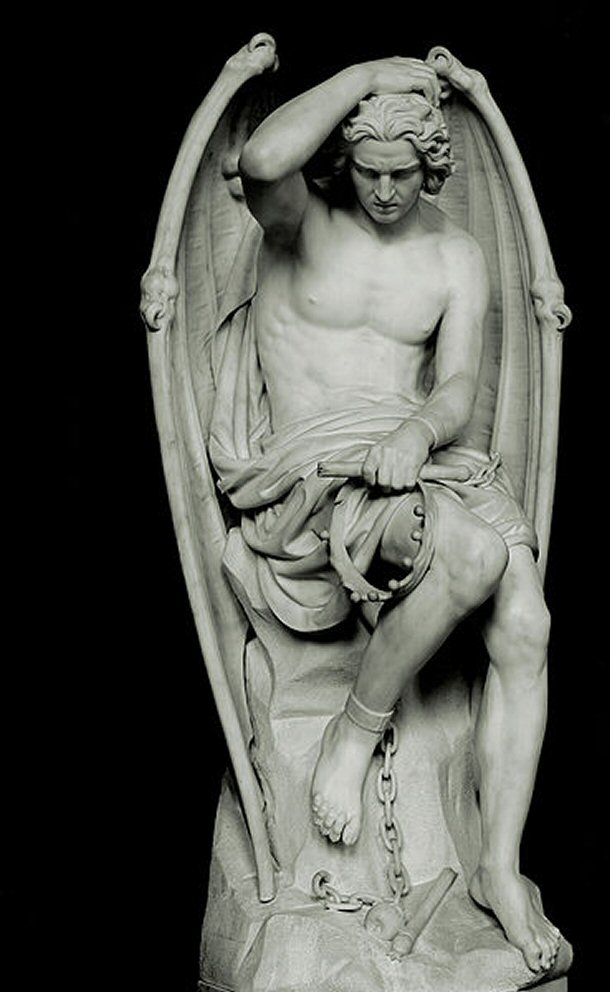
By Luc Viatour, via
Wikimedia Commons
Conclusion
There’s clearly no end when it comes to ridiculous lawsuits and the reality is that
as many absurd court stories that there have been over the years, there will
certainly be plenty more to come. Furthermore, chances are that we are yet to
see just how low and asinine some people can sink in a desperate and highly
questionable grab for cash.
Legal
Top 20 Most Ridiculous Lawsuits
25 Funny & Crazy Arrest Stories
10 Innocent People who Died on Death Row
Top 15 Myths About Guns
15 Cool Things Prisoners Get To Have In Jail
Top 15 Illegal Drugs That Used To Be Legal
15 Unusual Ways Crimes Have Been Solved
15 Survivor Accounts of Gruesome Crimes
Top 20 Most Ignored Road Signs & Their Accidents
15 Fascinating Facts about the Mafia
15 Weird Actions That Are Prosecuted in the Modern World
15 Legal Counsel That Have Never Lost Court Cases
The Adverse Effects of Intellectual Property Laws on the World of Art |